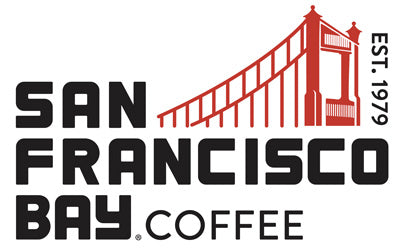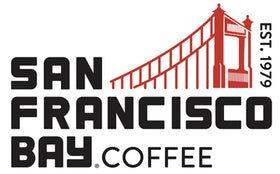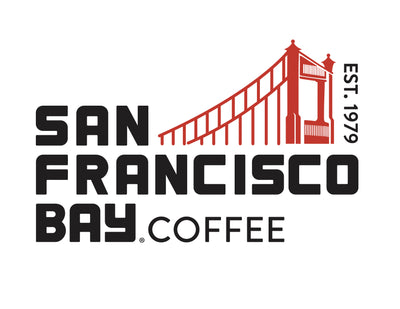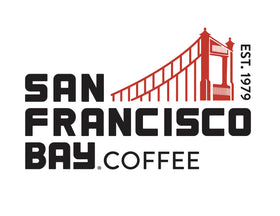What is the Ideal Coffee Brewing Temperature?
The difference between a good cup of coffee and an exceptional one often comes down to precision - and water temperature plays a crucial role in this delicate balance. Understanding how temperature affects extraction can transform your morning ritual, no matter how you love to brew your coffee. In this guide, we explore why temperature matters, how it impacts different roasts, and how to dial in the perfect temperature for your preferred brewing method.
Why does water temperature matter when brewing coffee?
Water temperature significantly affects coffee extraction and flavor. When brewing coffee, the ideal water temperature is between 195-205°F (90-96°C).
Here's why it matters:

At these optimal temperatures, water effectively extracts the desirable compounds from coffee grounds - including caffeine, oils, and various flavor molecules that give coffee its distinctive taste and aroma.
If the water is too hot (above 205°F), it can over-extract the coffee, pulling out bitter compounds and creating a harsh, burnt taste. The high temperature can also scald the coffee grounds, destroying some of the more delicate flavor compounds.
You'll get under-extraction if the water is too cool (below 195°F). The water won't be hot enough to properly dissolve and extract many of the coffee's flavor compounds. This results in weak, sour, flat-tasting coffee that lacks complexity and body.
This is why many coffee professionals avoid brewing with boiling water (212°F/100°C) and typically let it cool slightly after boiling. It's also why cold brew uses a completely different process. The lower temperature requires much longer extraction times (usually 12-24 hours) to properly extract the coffee's flavors.
Can the water temperature affect caffeine?
Yes, water temperature does affect caffeine extraction from coffee grounds, though perhaps not as dramatically as it affects flavor compounds. Here's how it works:
Caffeine is actually quite water-soluble and extracts relatively easily compared to many other compounds in coffee. Hot water (195-205°F) will extract caffeine more quickly and efficiently than cold water. However, given enough time, cold water can extract similar amounts of caffeine - this is why cold brew coffee isn't necessarily lower in caffeine than hot brewed coffee.
What's interesting is that:
-
Near-boiling water (above 205°F) doesn't actually extract significantly more caffeine than water at the ideal brewing temperature.
-
Cold water will eventually extract about the same amount of caffeine as hot water, it just takes much longer (hence the long steeping time for cold brew).
-
The biggest factor in caffeine content isn't actually water temperature but rather the coffee-to-water ratio and the type of beans used.
So, while temperature does impact how quickly caffeine extracts, it has a much more noticeable effect on flavor compounds than on final caffeine content. If you're primarily concerned about caffeine content, factors like bean selection and brew ratio will make a bigger difference than water temperature.
Determining Your Temperature Based on Roast Type and Brewing Method
The ideal water temperature varies based on both the roast level and the brewing method. Here's how to think about these relationships:
For Roast Levels:

-
Light roasts benefit from hotter water (200-205°F) because they're denser and need more energy to properly extract the complex acids and flavors.
-
Medium roasts work well at standard temperatures (195-200°F).
-
Dark roasts are best with slightly cooler water (190-195°F) since they're more porous and extract more easily. Plus, cooler water helps avoid bringing out too much bitterness.
For Brewing Methods:

-
Pour-over methods like V60 or Chemex: Start at 200-205°F to account for heat loss during pouring
-
French Press: 200°F works well since the water temperature stays relatively stable during steeping
-
AeroPress: More flexible, but 175-195°F often works well due to the pressure-assisted extraction
-
Espresso: Typically 190-196°F, as the pressure allows for efficient extraction at lower temperatures
-
Cold brew: Room temperature or cold water (35-70°F)
You can fine-tune within these ranges based on taste:
-
If your coffee tastes sour or weak, try increasing the temperature slightly
-
If it's bitter or harsh, try decreasing the temperature
-
For lighter roasts that taste too acidic, you might drop the temperature slightly to mellow them out
-
For dark roasts that taste too bitter, reducing temperature can help highlight the chocolate notes

Here's what makes coffee brewing so fascinating. While these temperature guidelines are helpful starting points, your personal taste preferences should always be the ultimate guide. Don't be afraid to experiment outside these ranges and note how different temperatures affect the flavors you enjoy most.
Try brewing the same coffee at a few different temperatures and pay attention to how the flavor changes. You might find that you prefer your light roast at a slightly lower temperature than recommended, or that your dark roast tastes better to you with hotter water. There's no "wrong" way to enjoy your coffee. The best temperature is the one that produces the cup you love most. This kind of experimentation and discovery is part of what makes coffee such an engaging hobby.
If you want to learn more, check out our guide, How to Make a Perfect Cup of Coffee.
Find the Perfect Coffee Roast For You at San Francisco Bay Coffee
Looking for high-quality beans? Consider trying different coffees from San Francisco Bay Coffee - this will give you the perfect opportunity to experiment with various brewing temperatures and discover the nuances each degree can bring to your cup. Shop our collection today!




